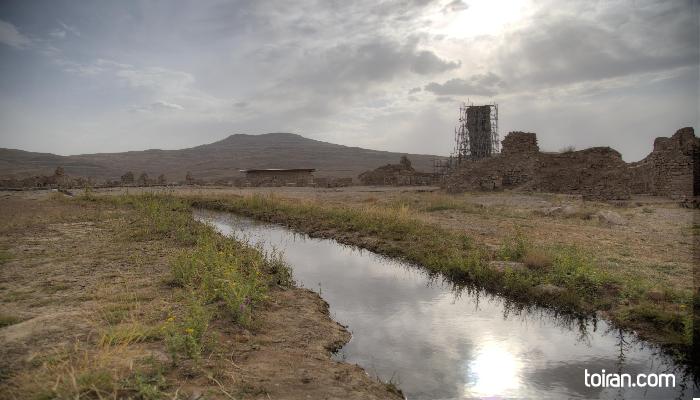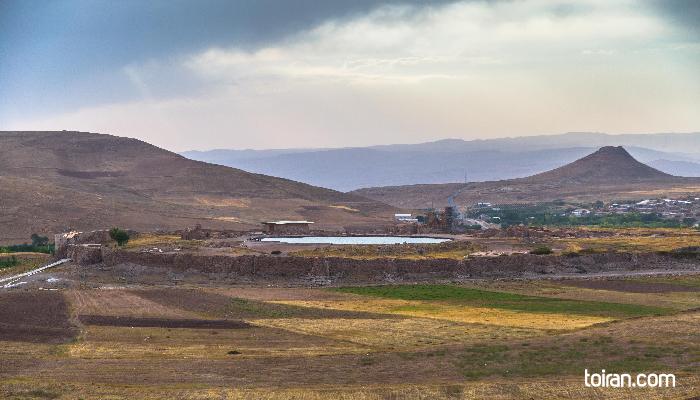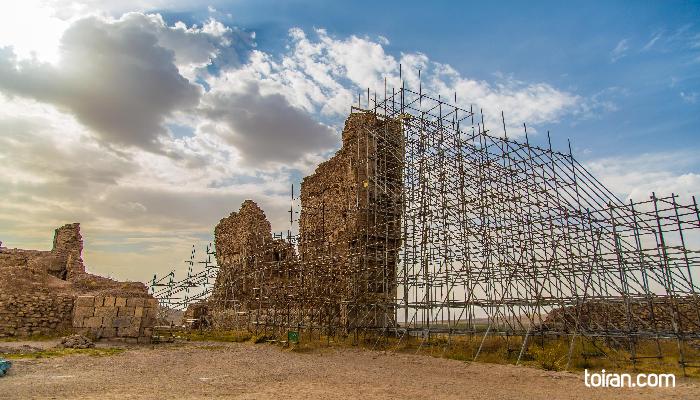Takht-e Soleyman is an archeological site located in Takab city in West Azarbaijan Province which is considered geographically closer to the city of Zanjan. One of the most important centers of the Persian civilization, Takht-e Soleyman was a religious, educational, social and cultural hub.
Spanning an area of 124,000 square meters, Takht-e Soleyman was inhabited by Medians (678 -549 BC), Achaemenids (550-330 BC), Parthians (247 BC–224 CE), Sassanids (226-651 CE) and Ilkhanids (1256–1335).
According to some accounts, Takht-e Soleyman is the birthplace of Zoroaster, the founder of Zoroastrianism which was the official religion of ancient Persia until the advent of Islam.
The site was originally named Adur Gushnasp and housed one of the three ‘Royal Fires’ of the Sassanid era. All Sassanid kings were required to humble themselves before these fires before ascending the throne.
Adur Burzen-Mihr was the fire of farmers and was located in Nishapur in modern day Khorasan. Adur Farnbag was the fire of persists and was located in Karyan in modern day Fars Province. Adur Gushnasp was the fire of warriors.
The Takht-e Soleyman compound includes the remains of a Sassanid palace, a Royal Fire Temple, Iwan-e Khosrow, a temple dedicated to the ancient Persian water Goddess Anahita, and a few smaller fire temples.
The structures in this compound are built around the Takht-e Soleyman Lake and inside an oval wall. The compound sits inside a plain surrounded by mountains.
Takht-e Soleyman Lake has a depth of 112 meters and is fed by groundwater. The temperature of the lake’s water is approximately 21 degrees centigrade throughout all seasons of the year.
The 1,200-meter Takht-e Soleyman Wall is constructed of rubble stone and is 5 meters thick and 14 meters tall. The outer part of the wall is decorated with hand-masoned stones and has 38 conical watchtowers.
Iwan-e Khosrow is one of the structures in Takht-e Soleyman that is located northwest of the lake. Red bricks with a mortar of Sarooj (mix of lime and clay) have been used in its construction. This Iwan leads to two heptagonal chambers which were built in the Ilkhanid era.
A 300-meter stone stream flows southwest of Takht-e Soleyman which locals have named ‘Stone Dragon.’
Takht-e Soleyman was heavily damaged in 624, during the war waged on the Persian Empire by Byzantine Emperor Heraclius (575-641).
In the 13th century, Takht-e Soleyman became a summer vacation spot for Ilkhanid rulers who made several additions to the compound including a council hall, an eastern Iwan and several chambers. The Ilkhanids also repaired parts of the Takht-e Soleyman Wall and built a new entrance near the original Sassanid entrance of the compound.
Takht-e Soleyman was registered as a National Heritage Site in 1938. The compound was registered as a UNESCO World Heritage Site in 2003.





